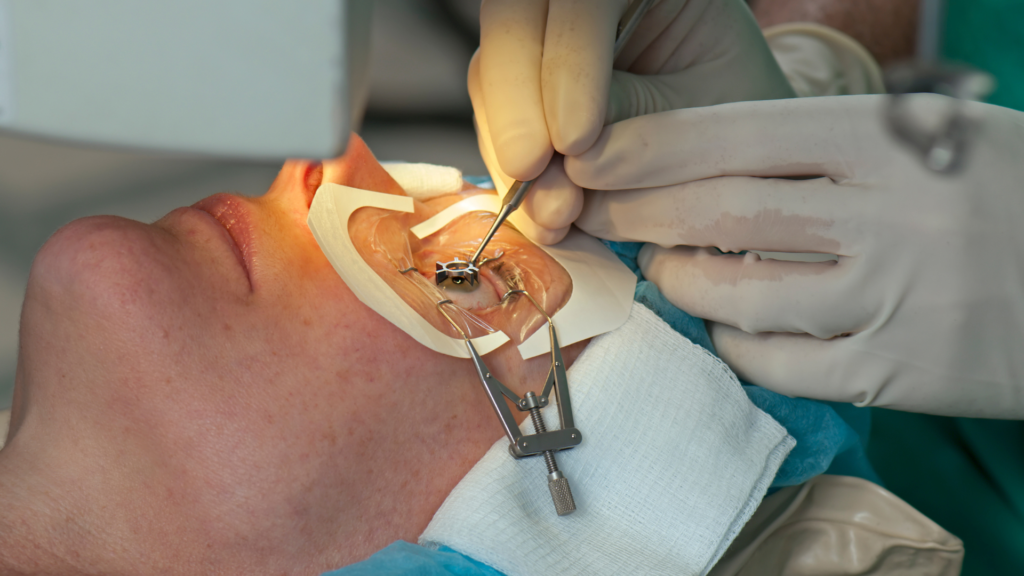LASIK and PRK are two popular laser vision correction procedures-the former being the most common procedure for correcting vision, while the latter is more common for correcting astigmatism. Both procedures correct vision by reshaping the cornea, and both procedures are effective and affordable. However, there are several differences between LASIK and PRK, which could affect your choice of which is best to correct your vision.
What Is LASIK?
LASIK surgery is a laser procedure that reshapes the cornea, the clear outer covering of the eye, to allow light into the eye. The ophthalmologist uses a cool laser to reshape your cornea during the procedure -usually to reduce or correct nearsightedness, farsightedness, or astigmatism.
LASIK Pros
- Cost Savings – Lasik surgery is not cheap. But you don’t have to break the bank to have this surgery done, as costs do vary depending on location. Unfortunately, low-cost Lasik clinics aren’t the best choices for everyone, so it’s important to do your research first.
- No Contact Lens Risks – Lasik is a permanent type of eye surgery that corrects nearsightedness, farsightedness, and astigmatism. One drawback to LASIK is that the eyes must be permanently clear in order to undergo the procedure. Contact lenses don’t pose the same risk, so they are a good option until your vision is stable enough to allow for the procedure.
- Convenience – The convenience of LASIK surgery is one of the main reasons patients get the procedure. While LASIK is not for everyone, it’s ideal for patients who want to make their vision better without wearing glasses or contacts for an extended period of time.
LASIK Cons
- Not everyone is eligible – Lasik eye surgery is a remarkable procedure, but not everyone is eligible, such as if you’re 40 and above. Around this age, people tend to have presbyopia, where the eye lens becomes stiff as well as hampers close-up vision.
- Some LASIK risks are possible – While LASIK remains one of the most cost-effective vision-correcting procedures available, it comes with a few risks, some of which are not completely understood.
- The flaps can be injured – Losing your sight is an undesirable outcome resulting from any eye surgery. Some surgeries, however, are riskier than others. Lasik, for example, is undeniably one of the most desirable forms of vision correction.
What Is PRK?
Wikipedia defines PRK as “Photorefractive keratectomy and laser-assisted sub-epithelial keratectomy are laser eye surgery procedures intended to correct a person’s vision, reducing dependency on glasses or contact lenses.”
Photorefractive keratectomy, also known as PRK, is a surgical procedure that reshapes the cornea to correct nearsightedness, farsightedness, or both. PRK is a procedure that is done in surgery, not an eye exam, and is done in an outpatient surgery center by a surgeon. During surgery, the surgeon uses a laser to reshape the cornea. PRK is usually done on patients with average to above-average vision since the procedure is designed to correct vision problems, not improve vision.
The PRK Pros
- Good for patients with excessive dry eye syndrome – A corneal transplant involves removing the damaged cornea and replacing it with either donor tissue or an artificial cornea. People with severe scarring may require corneal transplant surgery. The surgery allows patients to see clearly again.
- Good for patients with scarred or damaged corneas – If you have ever had a corneal transplant, you know the importance of having a strong cornea. The cornea is one of your two natural protective coverings, and it sits in the front of the eyeball, directly above your iris. This makes it especially vulnerable to damage from infection, injury, or other injuries. A corneal transplant replaces the damaged cornea with a healthy cornea from a donor’s eye.
- Some patients who are not candidates for LASIK surgery may be candidates for PRK – LASIK surgery is the top choice for correcting vision concerns, but not everyone is a good candidate for it. Those with thin corneas, dry eye syndrome, or excessive nearsightedness may not be good candidates for LASIK.
The PRK Cons
- Slower visual recovery – With this surgery, the doctor uses a laser to vaporize a small portion of the cornea, which results in a flap of tissue that opens up and allows you to see clearly.
- Increased discomfort – People who undergo laser eye surgery usually experience no pain. The surgery takes less than 15 minutes, and the patient doesn’t even feel too much pressure or discomfort when they wake up. Add that to being pain-free for the rest of the day, and you have something to look forward to.
LASIK and PRK, also known as photorefractive keratectomy, are procedures used to correct vision by reshaping the cornea. Both aim to improve eyesight by ensuring light focuses properly on the retina, the back of the eye. When considering these surgeries, it’s important to take necessary precautions. Firstly, discuss with your eye surgeon to determine which procedure is best suited for your condition. Secondly, ensure you choose a reputable surgeon. Choosing a low-grade doctor can result in serious complications and potential eye infections, even leading to vision loss in severe cases. In such situations, seeking legal aid from attorneys specializing in such negligence (accessible through platforms like https://www.warforindy.com/indianapolis-wrongful-death-lawyer) might be necessary to protect your rights and pursue necessary compensation.
To avoid such circumstances, it’s essential to have a thorough understanding of the procedure you’re opting for and, most importantly, who will be performing it. Also, there are some differences between LASIK and PRK, as well as advantages and disadvantages to each procedure. So, it is good to make yourself aware of this, so you can weigh up the pros and cons, and make an informed choice about what is best for you.
